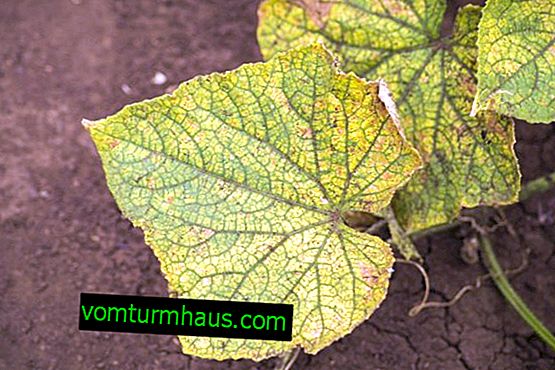Ficus cumila: home care
Ficus pumila refers to small plants, which is why it is attractive for lovers of home flowerpots. Before you purchase this plant, you must properly understand the intricacies of its cultivation and care.
Botanical description of the plant
Ficus pumila, or pygmy ficus, comes from East Asian countries. In the natural environment it can be found in Vietnam, China and Japan. The stems of the flowerpot are liana-like, do not keep straight, but smoothly descend down the pot or spread along the substrate. The foliage is heart-shaped. The size of the leaves is up to 3 cm, the color depends on the variety. Large leaves up to 10 cm long grow under natural conditions. Also in the wild appear fruits resembling the shape of a pear. In an unripe state, they have a green color and change to orange as they mature.
Photo gallery










Flowering at home almost never happens.
| Root system | Shallow, shallow |
| Stem | Creeper |
| Leaf shape | Heart-shaped |
| Leaf color | Green, sometimes combined with light green |
| Flower shape | Does not bloom at home |
| Flower color | Does not bloom at home |
| Fruit shape | Pear-shaped |
| Fruit color | Light green, when ripe turns orange |
| Fruit flavor | Not determined, do not use for food |
Benefit and harm
Dwarf ficus has several positive characteristics, in addition to the decorative function.
The plant contributes to:
- air purification;
- normalization of the indoor microclimate.
However, ficus can harm a person.
Before buying a ficus, you should pay attention to the following harmful factors:
- the plant secretes milky juice, which even in small quantities can cause a reaction in people with a predisposition to allergies;
- ficus can increase the symptoms of diseases related to the respiratory system.

What conditions do you need to create at home
In order for the ficus cumila to continue its life for a long time, it is necessary to place the flowerpot in conditions comfortable for it.
Lighting
Ficus cumila refers to flowerpots that need bright lighting. This is especially important for varieties characterized by a double color of foliage. When kept in the shade, light spots disappear. For this reason, it is better to choose a place for the flowerpot near a window facing east or west. If there is not enough natural light, lamps that provide artificial light to the plant will come to the rescue.

Ventilation
There are no special ventilation requirements. The main thing is to prevent a decrease in air humidity.
Did you know? There is a popular belief that in order for a family in which there are no children for a long time to appear, it is imperative to grow ficus.
Temperature mode
The optimal temperature indicators for the ficus of this species should be within +18 ... + 25 ° С. In the frosty season, the plant will well tolerate lower temperatures (+12 ... + 14 ° C), but do not lower it below +12 ° C.

Air humidity
Sufficient moisture in the air is very important for this plant. If at high temperatures the air is drier than usual, it is necessary to spray from the spray gun. Important! Heaters operating in full force in winter reduce humidity. This season, her performance needs to be especially controlled.
How to care at home
At home, a pot of dwarf ficus needs watering, fertilizer, periodic pruning and transplanting.
Watering
Watering the soil should be plentiful, because the plant loves moist soil. The frequency of hydration depends on when excess water drains through the drain. The soil should be moist. Watering during the frosty season should occur somewhat less frequently, but it is better not to allow the soil to dry out. Water should be warmed up to room temperature. In addition to soil irrigation, you need to wash the leaves with spraying.

Top dressing
For fertilizer use preparations for decorative foliage plants. Fertilizing is needed from the beginning of spring to the end of summer. Make preparations into the soil every two to three weeks. And in the winter, feeding is stopped.
We recommend that you learn how to care for Abidjan and Bengali ficus at home.
Pruning
Pruning a plant is needed to form a beautiful bush. It is better to carry out this procedure with the onset of spring. In order for the lateral stems to beautifully spread and fall down, you need to cut off the upper shoots. This is important for the reason that the buds on the upper parts of the flowerpot are rapidly developing and inhibit the growth of the lateral stems.
Transfer
Transplantation is carried out annually in the spring. The soil for dwarf ficus can be prepared from the earthen mixture and sand in the same amount. You can also buy a ready-made substrate.
Video: Ficus pumila transplant
Choose a container a little more than the previous one. Choose a shallow container with holes for drainage. Before transplanting, drainage is laid out on the bottom of the pot. Next, you can start the process itself:
- Carefully remove the ficus from the pot.
- Slightly drizzle the substrate with the roots.
- Move the plant to a new pot.
- Sprinkle rhizome with new soil.
How to propagate by cuttings
For propagation of ficus cumyl, the method of cuttings is used. To do this, cut the cuttings and immerse them in a previously prepared container with water. When the plant takes root, it can be planted in a pot with soil.

Growing difficulties
When growing ficus pumila, some difficulties may arise:
- Dry leaves. The most common cause is a too bright light. Try a little shade of the plant. If the flowerpot is located on the south windowsill, move it to another location.
- Fallen leaves. Perhaps you should check the temperature level and raise it to higher values. Drafts can also be the cause.
- Rotting root. Although ficus cumila loves moist soil, excessive stagnation of water in the soil should not be allowed. The affected parts should be removed, and further watering a little moderate.
- Spider mite. When it appears on the leaves, you can find a plaque in the form of a web. It must be removed manually and treated with any insecticide.
- Mealybug. In the presence of this pest on the green part, you can notice a whitish coating. The problem is treated through the use of a systemic insecticide.



